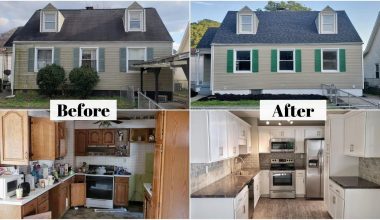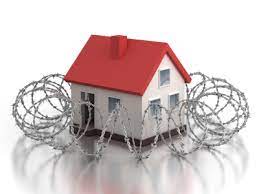Underestimating the vacancy rate is one of the major errors that real estate investors make. The market value and financial performance of a rental property might both suffer from using the incorrect vacancy rate. We will explore what the vacancy rate is and how to calculate the average rental rate with its formula in this article.
Vacancy Rate
The number of rental units in an apartment, building, complex, hotel, or colony that are vacant or unoccupied at a particular time is known as the vacancy rate. It is stated as a percentage. Or to put it another way, it is the exact opposite of the occupancy rate.
The percentage of vacant units in a multi-unit property is typically measured by the vacancy rate, which is employed by hotel and apartment building owners. But single-family homes and apartment landlords should employ vacancy rates in a different way.
The Real Estate Vacancy Rate
The vacancy rate, to put it simply, is the proportion of vacant units to all the available units in the building. The tenant has just moved out, the property needs some work, and a sudden change in the economic climate has led to the property being cleared. Or the property is new to the market and has just been put up for rent, among other possibilities for this vacancy.
When we refer to property in this context, one must recognize that we could be talking about any of the following:
- Dwelling apartment
- Residential structure
- Household homes
- Multifamily dwellings
- Commercial real estate
- Agricultural or vacation home
What Elements Affect the Vacancy Rate?
- The area where the property is located.
- The property’s age.
- The asking price for the property in question, or market rent
- Age group or range of ages to which the local population belongs
- The area’s population density
- Market accessibility for both consumer and durable goods
- Access to the transportation network
- The potential renter’s income
- The details of the property that are readily available on the market
- Compatibility between the prospective tenant’s needs and the amenities offered by the property.
Correlative Components
It is important to keep in mind that a variety of things may affect your capacity to draw potential tenants given that you need tenants in place in your properties to keep vacancy rates low. Some of them will be under your control, while others will be beyond it, such as those brought on by health issues or the state of the economy.
Low vacancy rates can result from a number of factors, such as:
- The sustainability of the economy in the region you’ve selected
- Favorable market circumstances for real estate
- Employers are multiplying in the area.
- The rising level of living standards in your community
- Being able to commute or stroll swiftly to important locations
- Access to public facilities, eateries, stores, and other conveniences is simple.
Relevance and Functions
- A low vacancy rate indicates that the property is in good condition and that many purchasers or tenants are interested in renting that structure or property.
- It also serves as a sign of the anticipated financial success of renting a home in a specific location.
- It demonstrates whether or not people desire to rent a particular property, which will assist you in determining whether you plan to make an investment in that area.
- Keep an eye out for any inefficiencies in the rental process and why the charges are so high.
Tips on How to Decrease the Vacancy Rate
You want to reduce your vacancy rate whenever you can since, generally speaking, the lower your vacancy rate, the better your property is performing. Let’s go over some suggestions for lowering your vacancy rate. Other recommendations for lowering vacancy rates include:
- Make prompt repairs to encourage occupants to stay and recommend them to potential new tenants.
- Screen tenants carefully to reduce turnover and the possibility of non-payment of rent.
- Make the property attractive from the outside so that it will appear good in photos and draw renters.
- If at all possible, provide onsite conveniences like parking and laundry to draw in more renters and perhaps raise rental rates.
- If vacant properties aren’t advertised, prospective tenants won’t be aware of them.
How Much Vacancy is a Good Thing?
A decent vacancy rate can vary depending on a number of variables, including the property’s location and nature. Because they take longer to rent, have higher rents, and require build-outs for other business requirements, commercial properties typically have greater vacancy rates than residential ones. Nevertheless, anything below the national average vacancy rate of 7% is seen as superior to the average. The majority of investors in urban areas seek out vacancy rates between 2 and 4 %, which are seen as favorable.
How to Calculate Vacancy Rate
To evaluate if there is a trend in a work position, you might want to calculate the vacancy rate with the right formula for several positions. Alternately, you might want to calculate your organization’s entire vacancy rate to check for trends.
Formula for Vacancy Rate
Using the formula below, you can calculate the vacancy rate with accuracy
Number of Vacant Units x 100 / Total Number of Units
An Example Using a Vacancy Rate Formula
Here is an example of how you can use the above formula to calculate the vacancy rate
In our hypothetical apartment complex, there are 40 total units, 6 of which are vacant. Let’s, therefore, assume that the neighborhood’s average apartment building vacancy rate is 5%. Let’s compare this housing complex to others by finding its vacancy rate percentage using its formula.
The number of unoccupied units is first multiplied by 100:
6 x 100 = 600
From the formula of vacancy rate given above, the next is to divide that sum by the building’s overall number of units:
600 / 40 = 15% vacancy rate.
According to the formula for calculating the vacancy rate, the results show that this apartment complex is not operating correctly since its 15% vacancy rate is three times higher than the typical vacancy rate for apartment buildings in that neighborhood. Finding out why the vacancy rate is so high can be because the flats are costly, antiquated, in need of maintenance, or the structure is ugly and lacks facilities.
This example demonstrates why it’s crucial to understand how to calculate the vacancy rate so you can use it as a statistic to evaluate a property. Using the formula, you can illustrate how the property is doing right now, and you can look back at the earlier rate of vacancy, to see how the property did in the past. Then you may check to see if vacancy rates rose, determine the cause, and determine whether the property is a good deal.
Why Different Markets Have Different Vacancy Rates
Vacancy rates, which are controlled by supply and demand, are a key indicator of the health of each local rental market. A market with a high vacancy rate, for instance, can have an excess of rental homes. Because homes could take longer to rent out and market rentals might be lower than expected, this, in turn, raises the risk of an investment.
Vacancy rates fluctuate from market to market due to a number of factors, including:
- Based on the state of the local economy, business growth or decline depends on job gains brought about by company development or job losses brought about by company closures.
- Based on job levels, disposable income fluctuates, which also affects the demand for rental property.
- Overbuilding due to the development of new apartments temporarily drives down market rents and raises vacancy rates in the near run.
- If interest rates are low, more individuals will buy than rent, and when rates rise or homeownership becomes less affordable, there will be greater demand for rental properties.
- In some areas, zoning laws make new construction difficult and expensive, raising rents and reducing vacancies.
Rental Vacancy Rate
A rental vacancy rate is the percentage of rental properties in a rental market that are vacant. Property owners utilize vacancy rates as a gauge of how well their structures are doing relative to the vacancy rate in the neighborhood. They are also employed as economic and real estate indicators for the larger markets. Residential properties may be empty for a variety of reasons, such as the recent eviction of a tenant, that the unit is undergoing maintenance or an update. That it is overpriced in comparison to other properties on the market or that the building is in an unpleasant area according to its location.
Using Vacancy Rates as a Planning Tool
A property owner can utilize vacancy rates as an analytical tool for both short-term and long-term planning by tracking how they vary over time. Perhaps the rental market has changed and the apartment rents have risen too much. In comparison to nearby rental homes, the building’s owner has to undertake more marketing and advertising to highlight the structure and its new features.
What Elements Influence a Rental Property’s Vacancy Rate?
One of the biggest challenges for real estate investors is dealing with vacant units, so it’s important to pay attention to the variables that influence the vacancy rate of rental property so you can figure out how to minimize it or, in the event that it does occur, what might have contributed to it.
- Depending on whether or not local businesses are growing, there may be more or fewer jobs available in the area depending on the growth or fall of local firms.
- The general economic health of the neighborhood is related to people’s capacity to pay their bills and their decision to buy or rent a home.
- Real estate market circumstances in the region may cause an increase or drop in vacancy rates depending on the situation of the rental market.
- The area’s quality of life also includes safety and security as key components, which may draw tenants or deter them depending on how they may change.
- Easy access to transportation and other amenities is important for luring and retaining renters.
- Interest rates could also cause vacancy rates to rise when they are low because more buyers will be interested in buying properties, or they could cause vacancy rates to fall when they are high because more people will be drawn to renting than buying.
- Regulatory laws in the area If new construction is prohibited, rental demand will rise, resulting in lower vacancy rates and higher rental costs.
- Property management. There will be this renter’s satisfaction if there is high maintenance of the property.
What is a Typical Vacancy Rate for Rentals?
Since the real estate market and economic conditions vary widely from region to region across the country, you can calculate the vacancy rate, typically over a period of one year. According to MashVisor, the average vacancy rate for rental properties in the US is 7%. However, this varies greatly by city, so it’s a good idea to check your property’s vacancy percentage against the local average.
It should be in a notice that a desirable vacancy rate for urban regions is anywhere between 2 and 4 percent. However, this also depends on the type of property, as vacancy rates vary depending on the type of property. These are the typical vacancy rates for each type of rental property, according to MashVisor:
- 30% Short-term rentals (such as those found on Airbnb)
- 45% of all vacation rentals
- Apartment buildings: 5.5%
- 5% of properties are single-family homes.
- Residential buildings: 4.7%
How to Lower Your Rental Property’s Vacancy Rate
Here are 5 excellent strategies to lower your rental property’s vacancy rate and retain your tenants for longer:
#1. Promote Your Rental Property at the Right Time
The rental market slows down at particular seasons of the year and in certain locations, making this a bad time to be seeking a tenant. To ensure that you find a tenant who will stay, try your best to find them once the market has recovered.
#2. Offer a Longer Lease
You are able to extend your lease beyond the typical 12-month term. A 2 or 3-year lease carries more risk for both the tenant and the landlord, but it may be able to address the issue of a vacancy during that time. It also saves you from having to locate a new tenant each year.
#3. Thorough Tenant Screening
To lower your risk of obtaining a poor renter who will default and leave you with a vacant home, make sure to screen your tenants thoroughly at the onset by conducting credit checks and background checks.
#4. Learn the Intents of the Tenant
To ensure that you have enough time to find a replacement renter and prevent your property from going empty, ask your tenant whether they plan to stay or go before their contract expires.
#5. Maintain the Property
Maintaining a property entails carrying out the required upkeep and repairs to make it a better place to live. If the property is properly kept, the tenants will probably stay longer.
Rental property vacancies are inevitable, so it’s crucial to plan ahead and be ready for the moment when a unit or unit may be vacant. Naturally, since this directly affects their return on investment, investors often try to keep their vacancy rate as low as possible. To ensure that the vacancy rate remains low or to identify solutions as to why it has increased, it is important to understand the circumstances that can cause a greater vacancy rate.
Average Vacancy Rate
2018 saw a 7 percent average vacancy rate for rental homes. The average vacancy rate for 2017 was the same as this. In an urban area, a healthy vacancy rate is normally between 2 and 4 percent, and it is typically greater in more rural areas. However, bear in mind that vacancy rates vary between different property kinds, regions of the nation, and even within cities. Usually, using the census date as shown here, you may determine the vacancy rate in your neighborhood.
For instance, Alabama had a vacancy rate for properties in the first quarter of 2018 of 13.1%, which is nearly double the national average. Contrarily, California had a vacancy rate of just 4.5%, which is far lower than the national average. In general, this indicates that California has a higher rental rate than Alabama. Jobs in the neighborhood, amenities, tourist attractions, cost of living, climate, etc. are additional factors that influence typical rental vacancy rates.
When Should Property Owners Worry About Vacancy Rates?
In the end, a landlord might gauge the performance of their rental business using the vacancy rate. Vacancy rates are typically considered a way to evaluate the performance of specific properties. Examples are hotels and motels. They can also be useful as an economic indicator of the situation of the real estate market as a whole.
Why Would the Property Be Vacant?
- between the time a tenant vacates and the time a new tenant moves in.
- If a unit has to be renovated or needs any repairs made.
- If the rental rate is excessively expensive and this deters potential tenants.
- And lastly, if the property is situated in a place where there is a low demand for rentals due to a number of circumstances.
Why Do I Have a Lot of Vacancies?
A number of causes can contribute to high vacancy rates, including:
#1. You’re Overcharging for Rent
If your rental rates are too expensive, it could be difficult to fill vacant units. Especially if more desirable flats of a similar size are available nearby. In addition, charging too much rent may result in the eviction of current renters. Use a site like com to keep track of what comparable properties are renting for, or look at sites like BiggerPockets to see what local landlords are charging.
#2. You Aren’t Keeping Up With Maintenance Demands
Landlords that don’t respond promptly and responsibly to tenant requests can experience pricey turnover more frequently. It’s crucial to take care of property maintenance and repair concerns as soon as they appear. Whether a tenant calls to report a leak or the smoke detector requires new batteries. By doing this, you may contribute to the satisfaction of your excellent tenants. Also, you may persuade them to extend their lease when the time comes.
#3. Your Property Doesn’t Face Competition From Nearby Comparable Properties
You’ll probably experience more vacancy concerns if you’re charging the same rental prices as other landlords in your neighborhood. But your property doesn’t provide the same facilities. You need to know the rent for at least three properties that are similar to yours in order to calculate the average rent cost in your neighborhood. The amount of space and the number of bedrooms should match, if at all possible. Also, look for apartments that have similar features like a garage, an in-unit washer and dryer, and a patio or balcony.
If your vacancy rate is high, take into account how your property (and rental prices) compare to the competitors.
Are There Facilities That Nearby Complexes Offer That Your Property Is Missing?
Do you charge more than other landlords or property managers in your neighborhood for a two-bedroom apartment?
If this is the case, you might need to update your amenities or lower your rental rates. Thus, in order to compete in the rental market and retain high-quality (and high-paying) tenants.
Calculating the Vacancy Rate (How to Calculate It)
There are many ways to calculate the vacancy rate when considering it from the perspective of the rental market circumstances. Here in the list are the three resources that landlords can utilize to calculate the local vacancy rate.
#1. Real Estate Managers
Local landlords or property managers are also resources that landlords can employ. Ask local landlords about their current experiences and discuss the vacancy rate in your neighborhood. These people might also be able to provide you with more detailed information regarding the vacancy rates in different areas.
#2. Property Agents
Landlords might think about working with a real estate agent to learn more about the vacancy rate in a specific location. Some real estate brokers might perform a comparative market analysis on local rental property statistics. This will show how long unoccupied properties that are now listed have been there, in addition to other crucial details like:
- How long did homes remain unoccupied before being rented
- Initial asking prices in relation to realized rental rates
#3. Census Data
The vacancy rates in various US regions, including the top 75 markets, are reported by the US Census Bureau. Census data, however, does not track the vacancy rate of particular neighborhoods, so it may not give an exact figure for your particular rental market area.
What Vacany Rate Is Good?
A decent vacancy rate can vary depending on a number of variables, including the property’s location and nature. Because they take longer to rent, have higher rents, and need build-outs for other business requirements, commercial properties typically have greater vacancy rates than residential ones.
What Is a Normal Vacancy Rate?
A vacancy rate is a number of rental units in an apartment, building, complex, hotel, or colony that is vacant or unoccupied at a particular time. It is stated as a percentage or it is the exact opposite of the occupancy rate.
What Is Rental Vacancy Rate?
A rental vacancy rate is the percentage of rental properties in a rental market that are vacant and according to MashVisor, the average vacancy rate for rental properties in the US is 7%.
What Causes Low Vacancy Rates?
The building industry has been slowly rebounding over the past decade, but its growth has not been fast enough to meet the increasing demand for rental housing. This has contributed to the historically low vacancy rate in the rental market. Existing zoning laws in highly sought-after locations severely restrict the construction of new multi-family dwellings.
What Does Low Job Vacancy Rate Mean?
The percentage of unemployed people to open positions indicates the potential labor pool for filling open positions. If the ratio is less than one, it means that there are more open positions than there are unemployed people. There are fewer open positions than unemployed people when the ratio is larger than one.
What Is a Good Cap Rate for Rental Property?
From 4% to 12%
A healthy cap rate might range from 4% to 12%. 4% may be seen as a decent cap rate if you live in a place with high demand and high costs, such as New York City or Los Angeles. Average cap rates of 10% or more are possible in areas with reduced demand, such as developing areas or rural neighborhoods.
What Does the Job Vacancy Rate Mean?
The job vacancy rate is the percentage of available jobs in relation to total job openings as of the final business day of the month (occupied positions and vacant positions).






